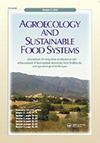Soil Carbon Dioxide Fluxes in Conventional and Conservation Tillage Corn Production Systems Receiving Poultry Litter and Inorganic Fertilizer
引用次数: 6
Abstract
Soil management practices can alter the natural balance at the soil-plant-atmosphere ecosystem interface, which can significantly affect the environment. This study compared CO2 fluxes in conventional tillage (CT) and no-tillage (NT) corn (Zea mays L.) production systems receiving poultry litter (PL) and ammonium nitrate (AN) fertilizers on a Decatur silt loam soil in the Tennessee Valley region of North Alabama from Spring 2008 to Fall 2009. Soil CO2 flux in CT plots (9.5 kg CO2 ha−1 day−1) was significantly greater than that in NT plots (4.9 kg CO2 ha−1 day−1 in summer. Soil CO2 fluxes were lowest in fall where CT plots had a mean soil CO2 emission of 0.8 kg CO2 ha−1 day−1, while plots under NT and grass fallow system were sinks of CO2 with fluxes −0.6 and −1.0 kg CO2 ha−1 day−1, respectively. Mean soil CO2 flux averaged over seasons in NT plots was 36% lower than that in CT plots. Grass fallow plots were net sinks of CO2 with a mean CO2 flux of −0.4 kg CO2 ha−1 day−1. Our study showed that application of PL or AN fertilizer in NT systems can significantly reduce soil CO2 emissions compared to CT systems in corn production.常规耕作和保护性耕作玉米生产系统中禽畜废弃物和无机肥料的土壤二氧化碳通量
土壤管理措施可以改变土壤-植物-大气生态系统界面的自然平衡,对环境产生重大影响。本研究比较了2008年春季至2009年秋季阿拉巴马州北部田纳西河谷地区迪卡特粉砂壤土上常规耕作(CT)和免耕作(NT)玉米(Zea mays L.)生产系统中使用家禽凋落物(PL)和硝酸铵(AN)肥料的CO2通量。夏季CT样地土壤CO2通量(9.5 kg CO2 ha−1 day−1)显著大于NT样地(4.9 kg CO2 ha−1 day−1)。土壤CO2通量在秋季最低,CT样地的平均土壤CO2排放量为0.8 kg CO2 ha−1 day−1,而NT样地和草地休闲系统的土壤CO2汇分别为- 0.6和- 1.0 kg CO2 ha−1 day−1。各季节平均土壤CO2通量,NT样地比CT样地低36%。休耕草地是二氧化碳的净汇,平均二氧化碳通量为- 0.4 kg CO2 ha - 1 day - 1。我们的研究表明,在玉米生产中,与CT系统相比,在NT系统中施用PL或AN肥可以显著减少土壤二氧化碳排放。
本文章由计算机程序翻译,如有差异,请以英文原文为准。
求助全文
约1分钟内获得全文
求助全文

 求助内容:
求助内容: 应助结果提醒方式:
应助结果提醒方式:


